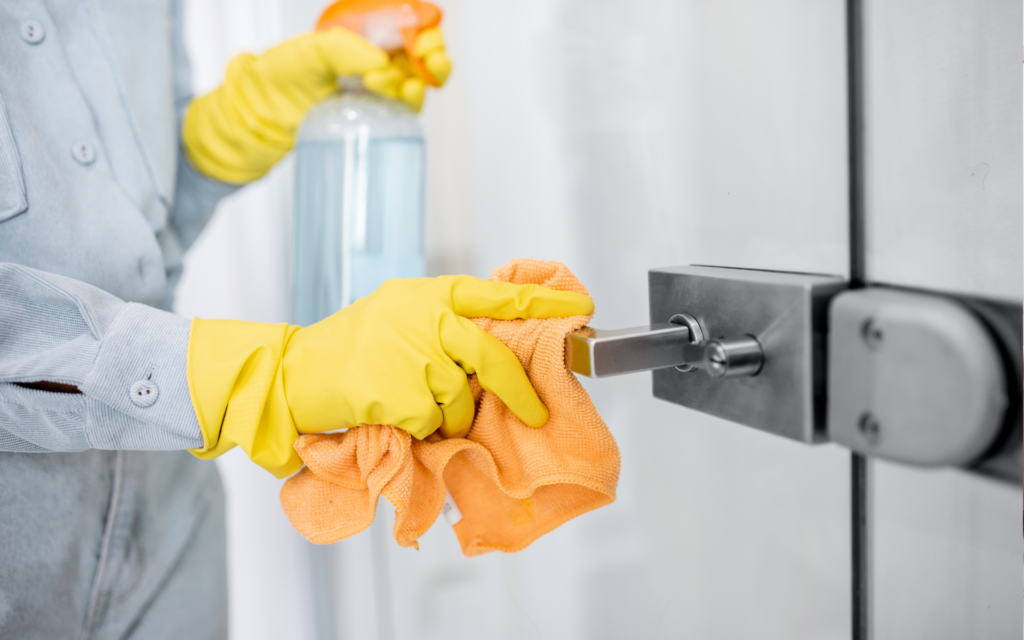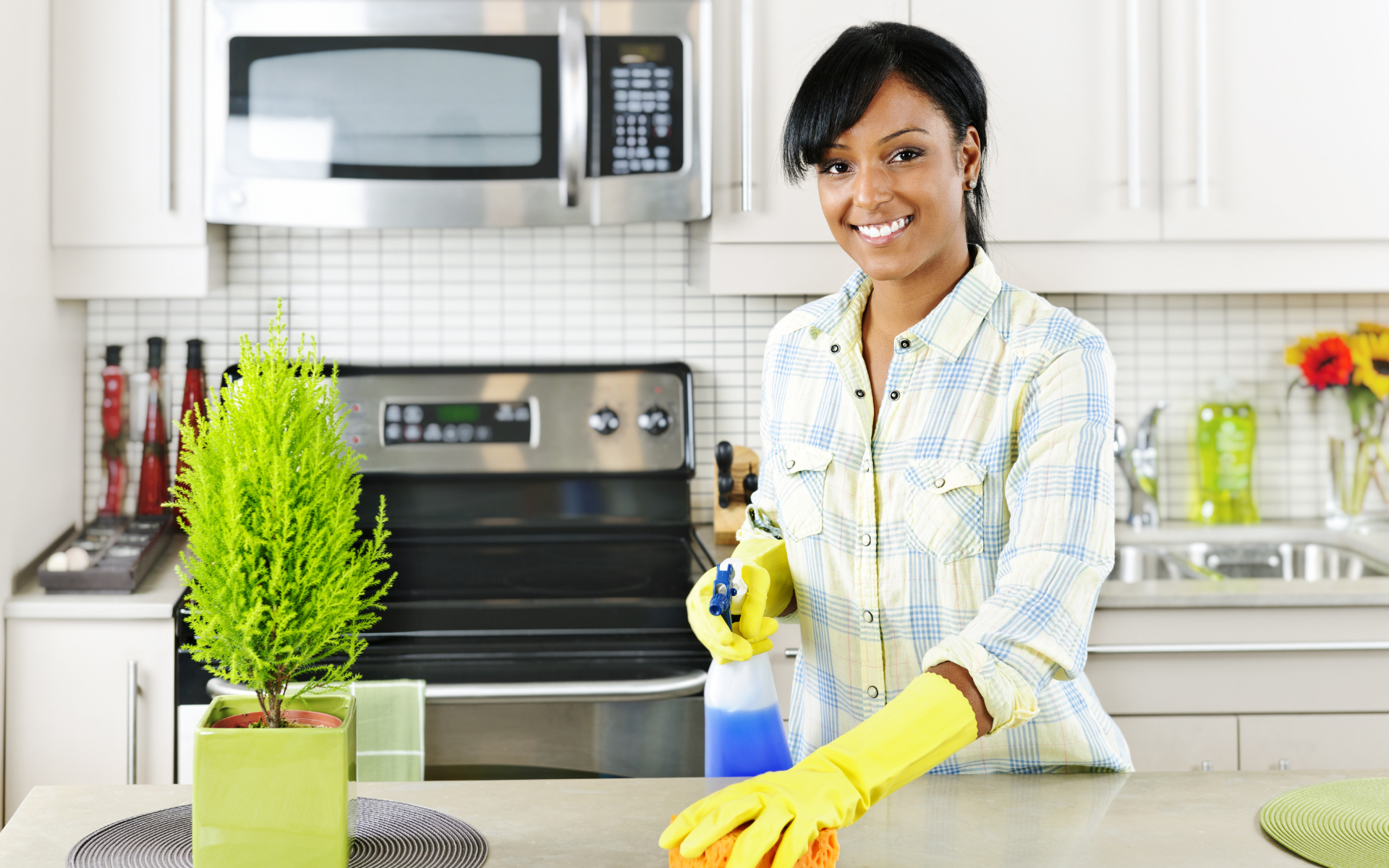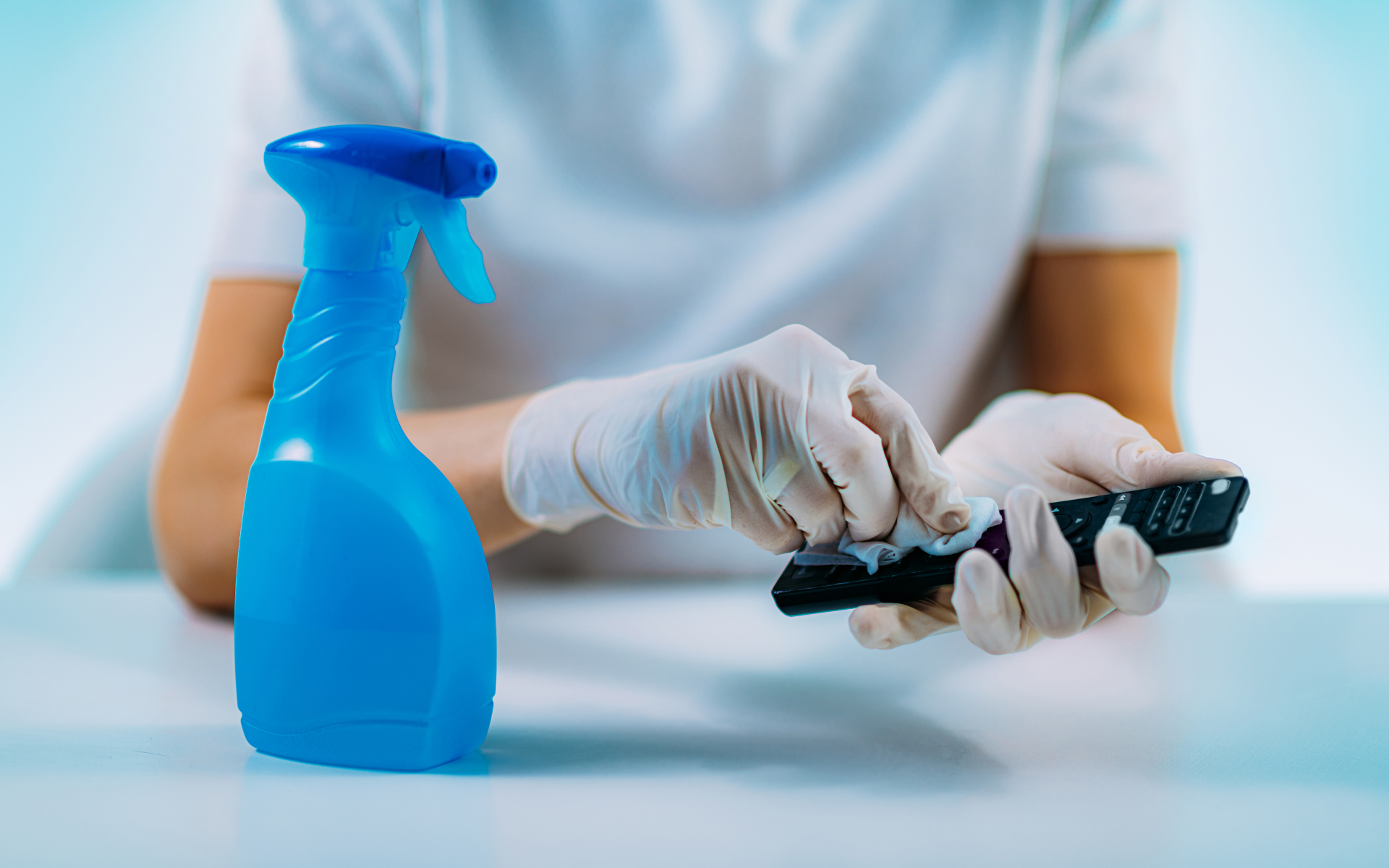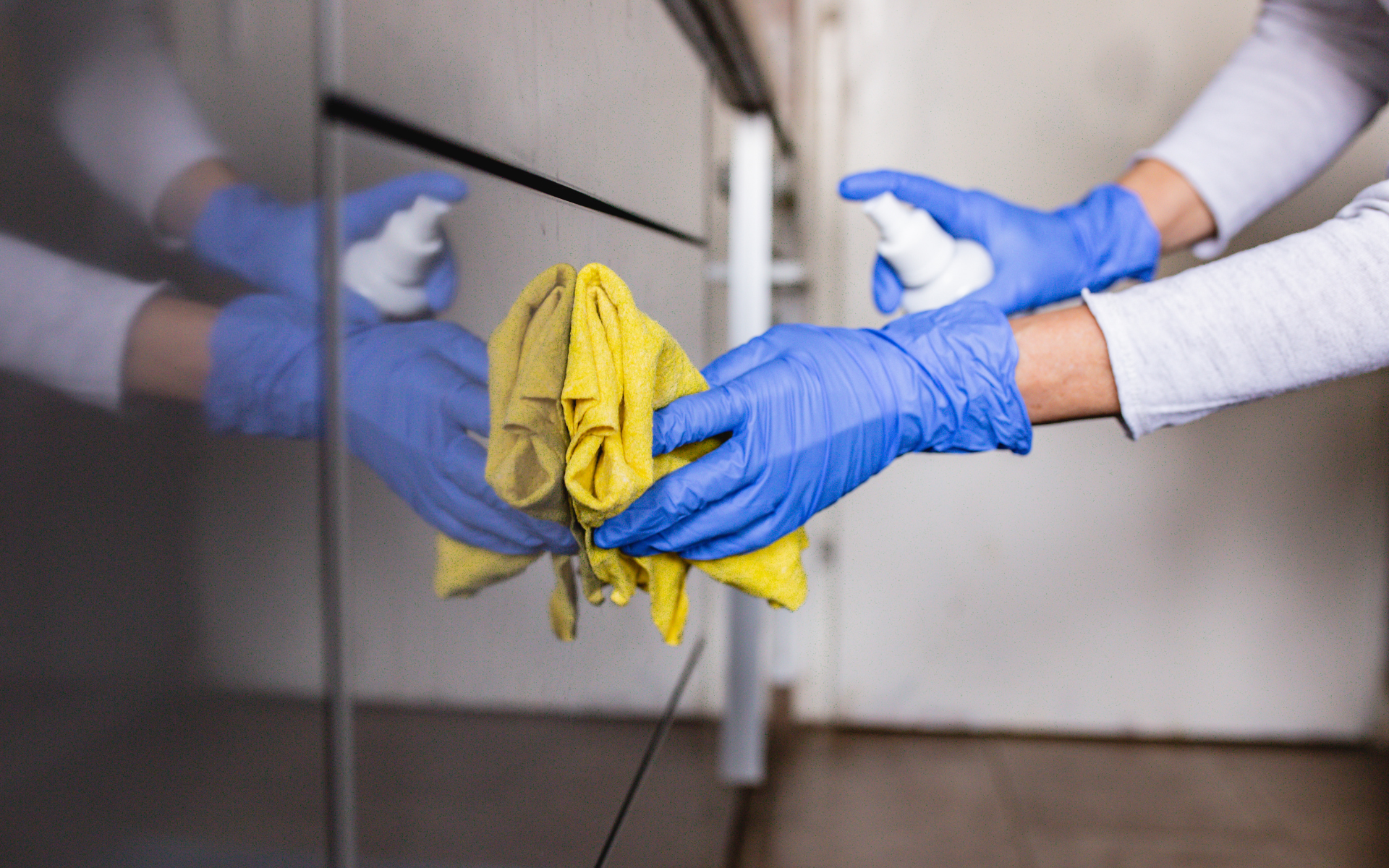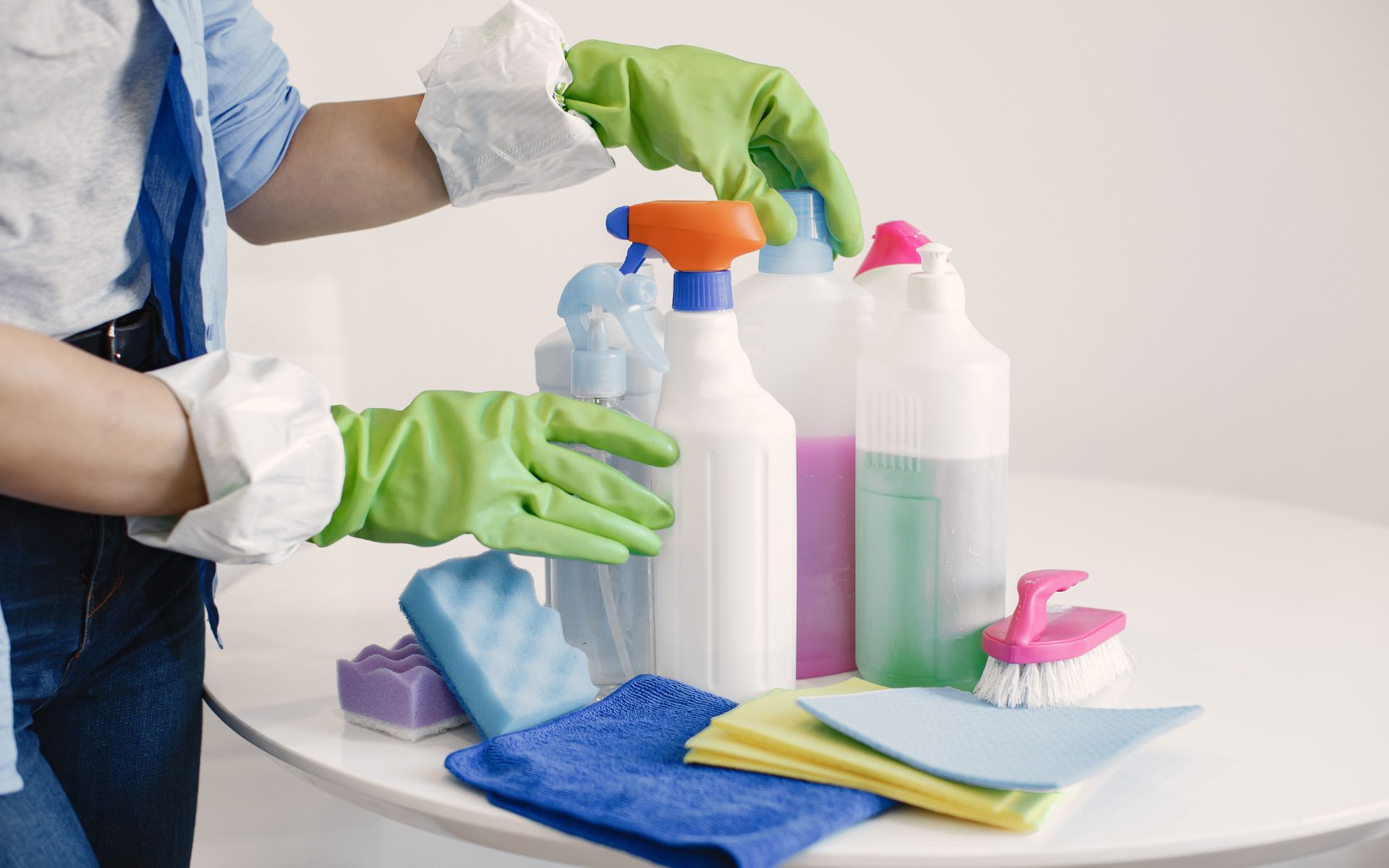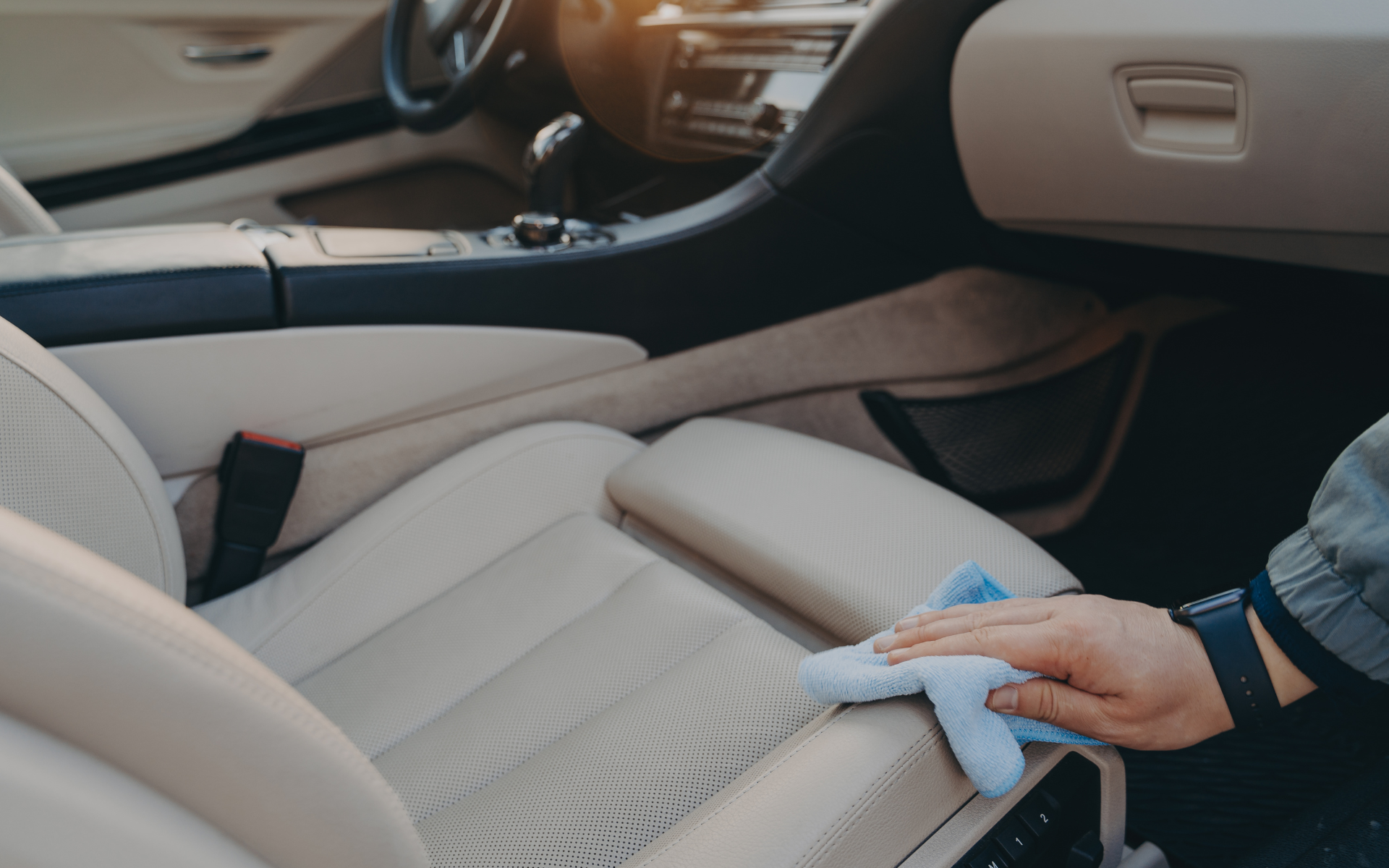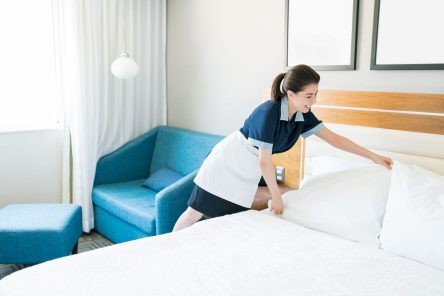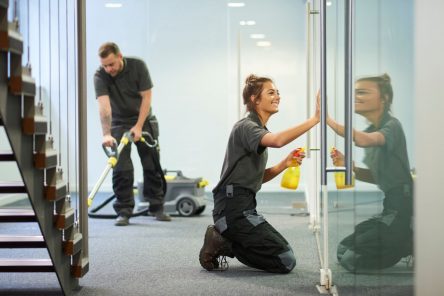You wake up, groggy from a night of restless sleep, and head to the kitchen to make your morning coffee. As you flip on the light switch, you can’t help but wonder just how many germs have made their home on that little toggle. Your mind wanders to all the other high-touch surfaces in your home – door handles, remote controls, even your beloved cell phone. Suddenly, it hits you – how often do you disinfect high-touch surfaces that multiple people come into contact with each day?
Keeping high-touch surfaces clean and disinfected is one of the most important steps in preventing infection and the spread of germs, bacteria, and viruses. We’ll dive into what exactly constitutes a high-touch surface, why disinfecting these areas is so crucial, and most importantly, how to clean and disinfect high-touch surfaces properly for a healthier, safer environment.
What Are High Touch Surfaces?
Before you hire a cleaning service or get into the nitty-gritty of disinfecting, let’s establish what qualifies as a high-touch surface. As the name implies, these are any surfaces that multiple people frequently come into contact with throughout the day.
Some common examples of other type of high-touch surfaces include:
Door handles/knobs
Use disinfecting wipes or spray to thoroughly coat door handles and knobs, letting the disinfectant remain wet per product instructions before wiping dry with a clean cloth.
Light switches
Carefully wipe down light switch plates, toggles, and knobs using a disinfecting wipe, making sure to get into crevices.
Countertops
Spray counters liberally with disinfectant cleaner and allow them to sit for the recommended contact time before wiping them down completely with paper towels or a clean cloth.
Tables
First clear tabletops of any items, then wipe down the entire surface using disinfecting wipes, reapplying as needed to keep it wet.
Touch screens (phones, computers, tablets, etc.)
Use disinfecting wipes approved for electronics or lightly mist a microfiber cloth with screen-safe disinfectant spray to gently wipe down touch screens.
Remote controls
Disinfecting wipes make easy work of cleaning remote controls – simply wipe down all surfaces and button areas thoroughly.
Stair railings
Spray or wipe down stair railings using an EPA-approved disinfectant, paying close attention to the handrail portions.
Toilet flush levers
Disinfect toilet flush levers, handles, and surfaces by spraying them with bathroom disinfectant cleaner and letting them sit before wiping them away.
Faucet handles
Spray faucet handles liberally with disinfectant and allow to remain wet for the product’s recommended dwell time, then wipe clean.
Microwave doors
Use disinfecting wipes to thoroughly wipe down the exterior microwave door, door handle, and control panel areas. Essentially, any surface that frequently sees high traffic from multiple sets of hands falls into the high-touch category. These are prime real estate for germs, bacteria, viruses, and other icky microbes to linger and potentially spread illness. Keeping these areas clean is a must!
The Importance of Disinfecting
Okay, so we’ve identified the high-touch surfaces in our homes and workplaces – but why is regularly disinfecting them so vital? The first key reason is to prevent the spread of germs that can lead to illnesses like the flu, common colds, stomach bugs, and other infections. When someone who is sick touches a surface, they leave behind an array of germs. If that surface doesn’t get properly disinfected, for example, the next person to touch it can easily pick up those germs and potentially get sick as well.
This germ-spreading isn’t just an issue in homes – it’s a major concern for businesses, schools, daycares, nursing homes, and any other facilities where lots of people congregate. High-touch surfaces act as germ highways, allowing bacteria and viruses to hitchhike from person to person. Consistent disinfecting helps break that cycle of transmission.
Another important factor is food safety. Think about all the high-touch surfaces involved in kitchen areas – faucets, counters, appliance doors…the list goes on. Keeping these areas disinfected reduces the risk of cross-contamination and decreases the risk and chances of spreading foodborne illnesses.
Finally, disinfecting high-touch surfaces just promotes overall cleanliness and peace of mind. There’s something luxuriously satisfying about knowing the areas you come into contact with most are sanitized and fresh. It boosts the air of healthy living.
How to Clean and Disinfect High Touch Surfaces Properly
According to the Centers for Disease Control and Prevention (CDC), cleaning visibly dirty surfaces followed by disinfection is a best practice measure for the prevention of COVID-19 and other viral respiratory illnesses in households, workplaces, and community settings.
Now that we’ve covered why disinfecting high-touch areas is so crucial, let’s get into the actual process of how to clean and disinfect these common high-touch surfaces more effectively. The steps are simple, but proper technique is key.
Step 1: Read the Manufacturer’s Instructions
Before breaking out any kind of cleaning or disinfecting solutions, consult the manufacturer’s instructions and ingredient lists first. This is especially important for items like touch screens, electronic devices, certain soft surfaces, and more. You want to make sure you’re using products that won’t potentially damage or degrade the surface material.
Step 2: Clear the Area
Next, take a moment to clear any clutter or objects off the high-touch surface you plan to disinfect. This ensures you’ll be able to thoroughly wipe down the entire area without obstructions.
Step 3: Choose the Right Disinfecting Products
When disinfecting high-touch areas, your best bets are EPA-approved disinfecting wipes, sprays, or diluted bleach solutions. These contain active antimicrobial ingredients that can effectively kill pathogens like viruses and bacteria.
For most standard hardened high-touch surfaces, disinfecting wipes are an excellent option. The pre-moistened wipes come saturated with a disinfecting solution, allowing you to quickly and easily wipe down surfaces.
Disinfecting sprays are another handy choice, especially for larger surface areas. These allow you to thoroughly cover the area before wiping down.
For soft, porous surfaces, look for disinfecting products specifically designed for use on materials like fabric, carpet, or upholstery. For carpet cleaning, make sure you use the right and safest cleaning materials.
Whatever product you choose, pay close attention to the directions on the label. Following these instructions is key for effective, safe disinfecting of clean surfaces.
Step 4: Disinfect the High Touch Area
With your disinfecting products selected and the area prepped, it’s time to tackle those high-touch surfaces! If using disinfecting wipes, simply wipe down the surface thoroughly. Apply pressure and make sure you hit every nook and cranny that sees frequent hand contact.
For sprays, apply the solution liberally until the surface is visibly wet, then let it stand for the product’s recommended contact time. Once that timer goes off, wipe down the area with a clean cloth or paper towel.
Don’t forget those easy-to-miss high-touch spots like light switches, cabinet knobs, remote controls, and more. Take your time and make sure you cover all high-touch areas thoroughly.
Step 5: Let Surfaces Air Dry
After wiping down all high-touch areas, simply allow everything to air dry completely. Most disinfectants need to stay wet for a certain period to work optimally.
Step 6: Practice Consistent Disinfecting
Cleaning and disinfecting high-touch surfaces is only effective if done consistently. Establish a disinfecting routine, whether weekly, bi-weekly, or monthly. High-traffic areas like kitchens require more frequent disinfecting.
Putting in the effort to clean and disinfect high-touch surfaces regularly helps keep your spaces fresher, healthier, and less prone to illness spreading. It’s a simple step that makes a big difference.
Disinfectant Wipes: Your High Touch Surface Saviors
Disinfecting wipes really do deserve a spotlight all their own. These pre-moistened, disposable wipes are heroes when it comes to both cleaning surfaces and disinfecting high-touch, germ-prone surfaces.
The pre-loaded cleaning solution in wipes eliminates hassle while still getting the job done right. Wipes are portable, mess-free, and kill up to 99.9% of bacteria and viruses on surfaces.
Many disinfecting wipes can be cleaned and disinfected in one simple step. With just a few swipes, you remove grime while simultaneously sanitizing against illness-causing microbes.
Durable yet disposable, disinfecting wipes are a must-have supply for combating germs on high-touch surfaces. Keep canisters handy around the home, office, and vehicles.
High Touch Hotspots to Disinfect Regularly
Some key high-touch surface areas that shouldn’t be overlooked include:
Kitchens: Disinfect countertops, cabinet pulls, appliance doors, sinks, faucets, and other food prep areas weekly.
Bathrooms: Disinfect toilets, sinks, showers, towel racks, equipment, and floor areas around moisture at least weekly.
Entryways: High foot traffic brings in outside dirt and germs – keep these areas sanitized.
By targeting these major hotbeds of germs and microbes, your disinfecting routine becomes even more effective. Staying on top of these key zones is essential for cleanliness and preventing illness.
The Grime of Soft Surfaces
Soft, porous surfaces like curtains, rugs, furniture upholstery, and car seats require special techniques for disinfecting. These materials easily harbor dust, crumbs, dead skin cells, hair, bacteria, and germs. Couches and chairs collect microbes from multiple people lounging on them. High-traffic carpets and rugs trap dirt, grime, and bacteria from shoes.
Final Thoughts
At the end of the day, keeping those high-touch surfaces clean and disinfected is one of the most important things you can do to prevent the spread of nasty germs and illnesses. It’s not rocket science – just a little bit of willpower and diligence with the right cleaning products.
The tips and techniques for disinfecting high-touch areas are simple enough. Just remember to focus on those major areas like kitchens, bathrooms, entryways, and anywhere lots of hands meet the same surfaces. A quick spin with some disinfecting wipes can work wonders.
So don’t be lazy – get to disinfecting and cleaning those high-traffic zones! Your health and the health of your loved ones will thank you. Who knows, you might even be able to breathe a little easier knowing you’ve battled back against those germy foes. Now that’s living the good life!


